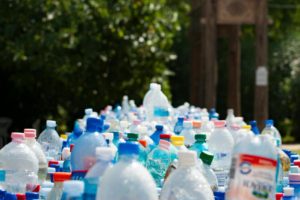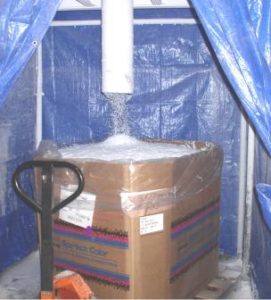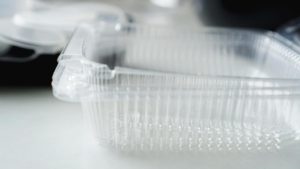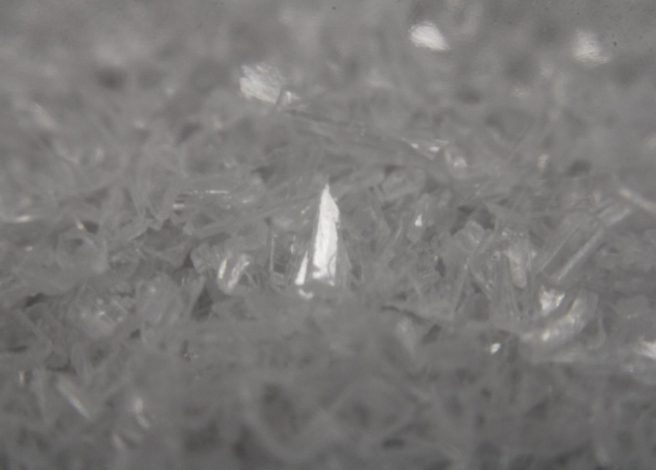Listen to the audio recording of this blog post or check out the featured Podcast about this topic.
At a Glance
- Post-consumer recycled materials vary in quality, depending on source, sorting, and contamination — real-world PCR isn’t always consistent.
- PCR adds color/odor challenges, meaning branding, clarity, and food safety must be carefully managed.
- Regulatory compliance is non-negotiable, requiring PCR materials to meet FDA/food-contact standards before use.
- Transparent testing and supplier partnerships are essential to harness PCR benefits without compromising performance.
Most of us want to do what is best for the planet. Few people intentionally pour motor oil down city street drains or dump nuclear waste into lakes. Now more than ever, it’s vital that our choices reflect our good intentions for the environment. For those in the food industry, a key decision is using Post-Consumer Recycled materials (PCR) in packaging.
Understanding PCR is essential as we move towards a sustainability-driven market. Using recycled plastic in your packaging sounds great in theory, but the reality is more complicated. As rules tighten and buyers seek eco-friendly choices, you need real facts, not just ads. Making smart decisions about PCR affects your product quality, bottom line, and brand reputation.
This guide will help you understand the real challenges of using recycled content in your packaging. It will equip you with the knowledge to make smarter packaging decisions while also giving Mother Nature a high-five.
The PCR Sourcing Challenge
 The first major obstacle in PCR adoption lies in sourcing (literally getting the product). PCR materials can vary and have supply issues, while virgin materials have stable properties. The recycling system mainly targets beverage bottles. They are easy to spot as polyethylene terephthalate (PET — we’ll keep using the acronym). Plus, they usually have little contamination.
The first major obstacle in PCR adoption lies in sourcing (literally getting the product). PCR materials can vary and have supply issues, while virgin materials have stable properties. The recycling system mainly targets beverage bottles. They are easy to spot as polyethylene terephthalate (PET — we’ll keep using the acronym). Plus, they usually have little contamination.
Food containers are a little trickier to recycle. They often have food residue, staining from spices, sticky labels, or glues attached to the plastic. Some consumers even heat them in microwaves or ovens, which damages the material.
Supply and Demand Imbalance
The food packaging industry faces stiff competition for quality PCR material. Big beverage companies have set bold goals to use more recycled content in their products. Some brands aim for 25%, 50%, or even 100% PCR content. These commitments and laws in regions like Europe increase demand. For example, Europe requires 25% recycled content in bottles by 2025.
Meanwhile, North American recovery rates lag significantly behind European ones. European recycling processes can recover around 74% of usable PET from collected materials. In contrast, U.S. systems often only achieve about 33% recovery from the same material. This inefficiency further exacerbates the supply shortage.
Quality Considerations
For food industry professionals, quality concerns cannot be overlooked. PCR materials generally exhibit reduced clarity and often have a slight color tint — typically a greenish-brown or blue hue. This visual difference becomes more pronounced as PCR content increases.
Put on your science hat for this part: When plastic undergoes mechanical recycling, it’s basically melted down and reformed. This process is like taking a chain necklace, cutting some links, and putting it back together. The chain gets shorter each time. With each recycling cycle, the long molecular chains in plastic shorten, reducing the strength of plastic and useful properties.
This is not the same as chemical recycling. In that process, the necklace is fully dissolved into its links and rebuilt into a brand-new chain. With chemical recycling, the quality stays more consistent because you’re rebuilding from scratch.
Recycled plastic weakens with each cycle, so manufacturers often mix it with virgin plastic. This helps maintain the quality needed for food packaging. However, most food containers can’t be made from 100% recycled plastic. The material simply wouldn’t perform well enough on its own.
Food Safety Assurance
Despite quality variations, food safety is rigorously maintained through certified recycling systems. The European Food Standards Association (EFSA) certifies recycling processes in Europe, and the FDA does the same in the U.S. They ensure that contaminated plastics become safe for food use. These certifications require thorough testing, which ensures that contaminants are removed and confirms the processed PCR is food-safe.
The Economic Reality
 Perhaps the most significant barrier to widespread PCR adoption is economic. Contrary to what might be expected, PCR typically costs more than virgin plastic — not less. This premium covers the hard work of collecting, sorting, cleaning, and processing used plastics, turning them into food-grade materials.
Perhaps the most significant barrier to widespread PCR adoption is economic. Contrary to what might be expected, PCR typically costs more than virgin plastic — not less. This premium covers the hard work of collecting, sorting, cleaning, and processing used plastics, turning them into food-grade materials.
As demand rises and supply doesn’t keep up, costs increase even more. Also, using higher PCR percentages can create more waste. This can happen because the material properties become inconsistent, leading to rejected products. These factors create a challenging economic equation for food packaging producers.
This information may have you throwing your hands in the air and yelling through gritted teeth, “Why is it so much more money to do the right thing?!” But don’t give up just yet.
Finding the Sweet Spot
Successful companies using post-consumer recycled materials think about more than just strong packaging. They also weigh what makes financial sense for their business.
This typically involves a carefully calibrated mix of:
- Post-consumer flake (plastic that is ground into small pieces) from collected consumer waste
- Post-industrial flake (trim waste from manufacturing processes)
- Virgin resin
The optimal ratio depends on the specific application requirements. Some products need high clarity or strong mechanical properties, so they should limit PCR content, while others can handle higher percentages.
Consumer Perception vs. Reality
A significant disconnect exists between public perception and technical reality. Consumers often see “plastic” as one big group. They might not see the key differences between PET, polypropylene, polystyrene, and other types. This simplification leads to misconceptions about recycling potential and environmental impact.
Simply put, when many people see plastic packaging, they think, “It’s all just plastic,” like saying all cars are the same regardless of make or model. Many people don’t know that different plastics have unique properties. They also have different recycling methods and environmental effects. It’s like lumping together apples, oranges, and bananas just because they’re all fruit. This confusion makes it tough to discuss which plastics are best for certain uses. It also affects the recycling process in real-life situations.
More people want recycled content, but they often resist lower quality or higher costs, creating a conflict between preferences and expectations. Education remains a critical need, though competing commercial interests from alternative packaging industries often complicate these efforts.

Finding Your Footing Through Practical PCR Integration
For food industry professionals, post-consumer recycled materials represent a sustainability tool that requires careful implementation. The path forward involves:
- Setting realistic PCR content targets based on application requirements
- Understanding supply chain constraints and planning accordingly
- Balancing sustainability messaging with economic realities
- Supporting improved collection and processing infrastructure
- Educating consumers about the value of food-grade plastic recycling
When food industry professionals grasp these PCR realities, they can choose wisely. It helps the environment and keeps products safe, high-quality, and profitable. The journey to truly sustainable packaging isn’t about bold promises or unreachable goals. It’s about discovering where environmental gains and business needs can work together. Consider it a balancing act for sustainability. If you lean too far either way, you’ll fall flat. But if you find the middle ground, you can make real progress and keep your business standing tall.
Are you interested in learning more about sustainability? Visit our Learning Center today. If you have any questions, don’t hesitate to reach out!

